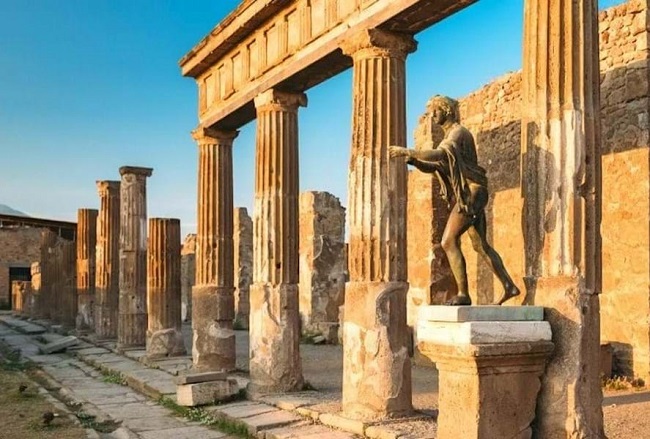VESUVIUS | Revealing ancient mysteries of the 79 d.C. eruption
A new multidisciplinary study has allowed better dating of the event and following the eruption effects up to a thousand kilometers distance
The event would have happened between 24 and 25 August of 79 d.C. This is the date that, based on current knowledge, the eruption of Pompeii occurred, according to the famous letter from Pliny the Younger to Tacitus. But the true date is another!
After centuries of volcanic quiescence, the 79 d.C. eruption of Vesuvius destroyed part of the territory and surrounding towns. Almost two millennia after the eruption, an international team of researchers has analyzed again that event to get to a comprehensive state-of-the-art on the knowledge of the most famous eruption ever, starting from the exact date on which it occurred.
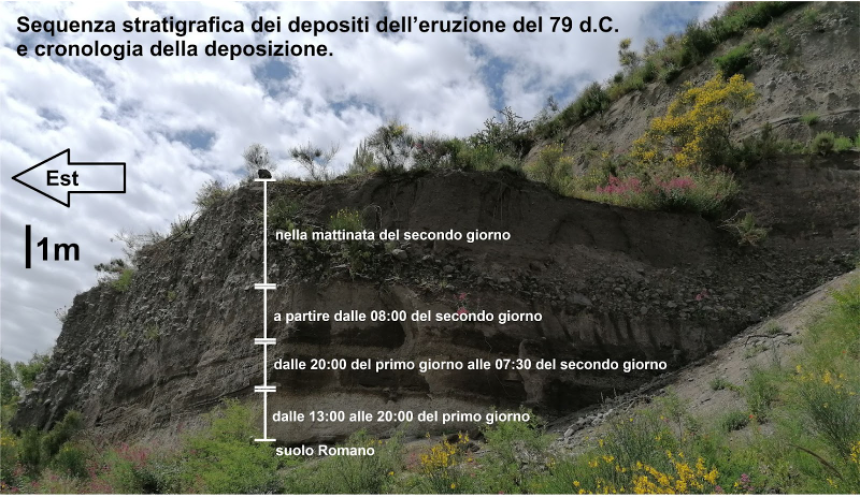
The integration among field studies, laboratory analyses, and historical fonts has allowed following all phases of the eruption over time, from the magma chamber to the ash deposition in areas extremely far from Vesuvius, with traces up to Greece.
The study “The 79 CE eruption of Vesuvius: a lesson from the past and the need of a multidisciplinary approach for developments in volcanology”, recently published on the prestigious journal ‘Earth-Science Reviews’, has been coordinated by Istituto Nazionale di Geofisica e Vulcanologia (INGV), in collaboration with Istituto di Geologia Ambientale e Geoingegneria at Consiglio Nazionale delle Ricerche (IGAG-CNR), Centro Interdipartimentale per lo Studio degli Effetti del Cambiamento Climatico (CIRSEC) and Dipartimento di Scienze della Terra at Università di Pisa, Laboratoire Magmas et Volcans at Clermont-Ferrand (LMV) in France, and School of Engineering and Physical Sciences (EPS) at the Heriot-Watt University of Edinburgh in UK. The study has been conducted in the framework of the project ‘Pianeta Dinamico’ funded by INGV.
The team of multidisciplinary researchers has collected and then critically analyzed the huge scientific production available for this eruption, by integrating it with new discoveries.
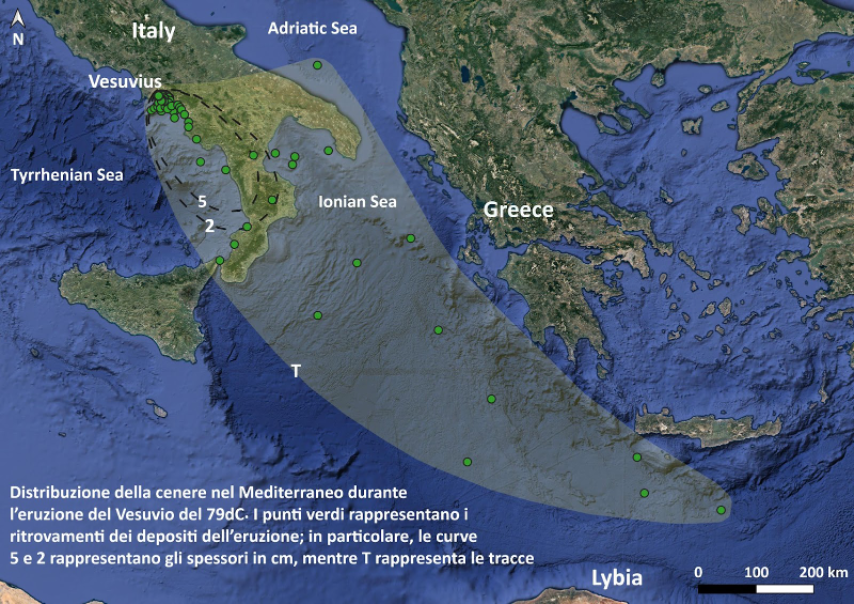
“Our work examines with a wide and multidisciplinary approach different aspects of the 79 d.C. eruption, by integration of historical, stratigraphic, sedimentological, petrological, geophysical, paleoclimatic and modeling data, referring to the magmatic and eruptive processes of one among the most famous and devastating events occurred in the Neapolitan volcanic area’’, explains Mauro A. Di Vito, a volcanologist at INGV and coordinator of the study. ‘‘The work starts by dating the eruption, which would have occurred in the autumn and not on 24 August of 79 d.C. as previously thought, and continues by analyzing the volcanological data available in the proximity of the volcano, getting to thousand kilometers distance where traces of the eruption have been found in the form of fine ash’’.
“Since the 13th century, the date of 24th August has been the subject of debate among historians, archaeologists and geologists because it is inconsistent with numerous pieces of evidence”, says Biagio Giaccio, researcher of the Igag-Cnr and co-author of the article. “Such as, for example, the finds in Pompeii of typically autumnal fruits or the heavy tunics worn by the inhabitants that were badly reconciled with the date of 24-25 August”, adds Giaccio. However, the definitive proof of the inaccuracy of the date only emerged a few years ago. “An inscription in charcoal on the wall of a building in Pompeii which translated quotes ‘The sixteenth day before the calends of November, he indulged in food in an immoderate way’, indicating that the eruption certainly occurred after 17 October”, continues Giaccio.
The date more accredited is therefore now that of 24-25 October.
The study has been integrated by a quantitative assessment of the impact of single phases of the eruption on those areas, including archaeological sites, close to the volcano.
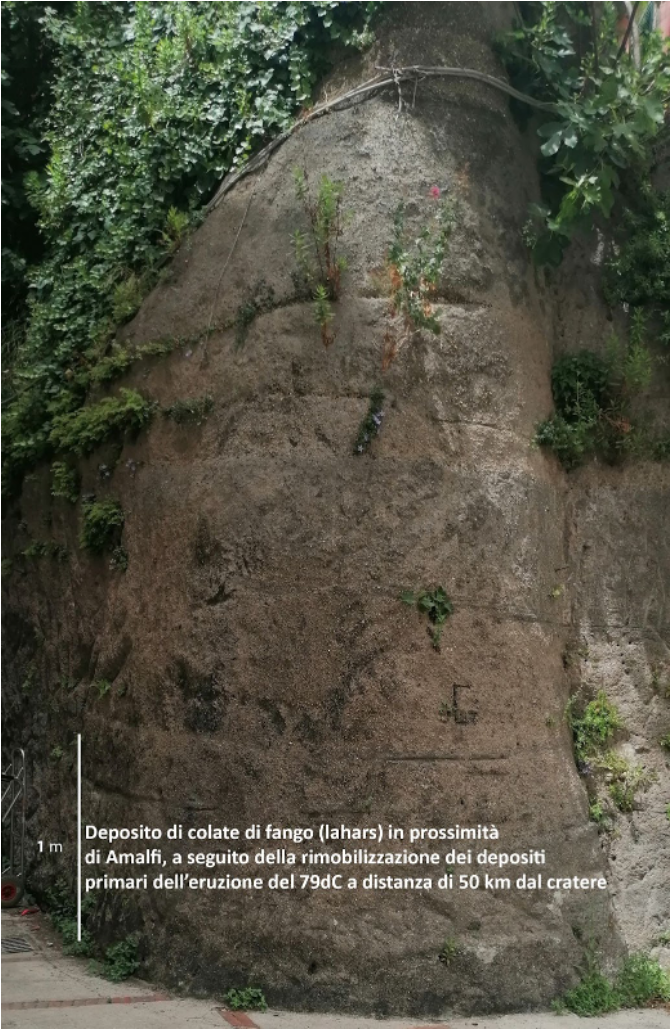
‘‘The spirit of our work has been that of understanding how a past event can represent a window to the future, by opening to new perspectives for the study of similar events that might occur again’’, continues Domenico Doronzo, volcanologist of INGV and co-author of the research. ‘‘This study will allow improving the applicability of forecasting models, from precursory phenomena to impact in eruptive and depositional processes. It will also allow contributing to reducing the vulnerability of those areas and infrastructures exposed to volcanic risk, not only close to the volcano but also – as the 79 d.C. event teaches – at a hundred kilometers distance from it’’.
“In recent years, it has become increasingly important to understand the impact of eruptions on climate also to be able to study the origin and impact of some short climatic variations. However, we still do not know a lot – and with the appropriate resolution – of the climatic conditions at the time of the eruption of 79 d.C.” comments Gianni Zanchetta of the University of Pisa and co-author of the research.
“In this work, we combined knowledge on regional climatic conditions at the time of the eruption to attempt a first synthesis” comments Monica Bini of the University of Pisa, co-author of the research. “Also, to direct future research on this aspect which still has many dark sides”.
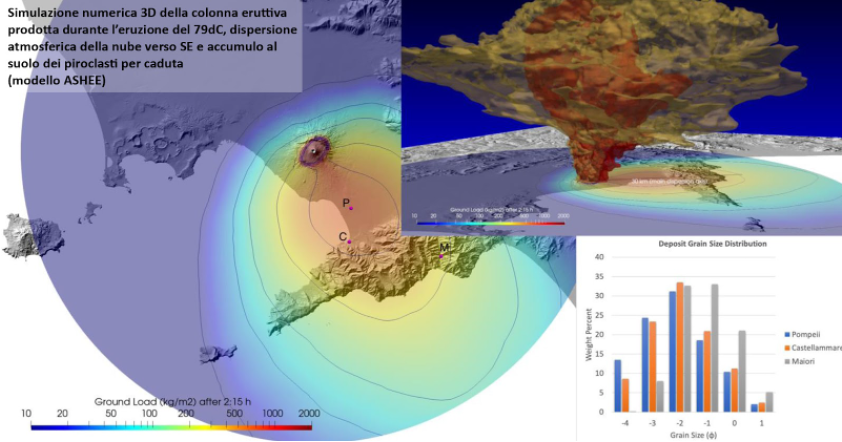
The results of this study have received the appreciation of a world icon of volcanology like Raymond Cas, Prof. emeritus at the School of Earth Atmosphere and Environment of the Monash University (Australia) ‘‘The 79 AD eruption of Vesuvius volcano is one of the most iconic in the field of physical volcanology’’, states the Emeritus Professor Ray Cas. ‘‘Observations of the eruption as well as endless studies of the deposits and interpretation of the eruption processes underpin many of the concepts and understanding of explosive eruption processes in modern volcanology. A review of what is known about the eruption and its deposits is therefore very important to research volcanologists, and justifies a thorough and long review paper, such as this one. The authors are to be congratulated on the extremely comprehensive details extracted from the huge historical record and contemporary scientific literature on this iconic eruption’’.


